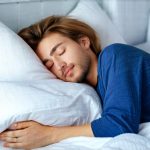Many people experience sleep disturbances, but for those with urge-sensitive sleep patterns—individuals who find intrusive thoughts or physical sensations quickly escalating into powerful urges to get out of bed—the challenge is particularly acute. It’s not simply about falling asleep; it’s about staying asleep when an unwelcome thought or feeling arises and threatens to derail the entire night. These urges aren’t necessarily related to specific anxieties or fears, but rather a heightened sensitivity to internal stimuli, creating a cycle of wakefulness and frustration. This can lead to significant sleep deprivation, impacting daytime functioning and overall well-being.
Traditional sleep hygiene advice often focuses on establishing routines and minimizing external distractions. While valuable, these strategies frequently fall short for urge-sensitive sleepers because the primary disruptor is internal. The battle isn’t against noise or light; it’s against one’s own mind and body. This requires a more nuanced approach that acknowledges the unique challenges of intrusive urges and proactively addresses them before they escalate into full-blown wakefulness. One surprisingly effective tool in this fight can be strategic nightlight use, but not just any nightlight—the setup and type matter immensely.
The Psychology Behind Nightlights for Urge Reduction
The connection between dim light and reduced urge intensity may seem counterintuitive; after all, darkness is often promoted as ideal for sleep. However, for urge-sensitive individuals, complete darkness can actually amplify internal sensations. When the visual system isn’t receiving much input, the brain tends to compensate by focusing more intensely on other senses – tactile feelings, bodily sensations, and intrusive thoughts. This heightened awareness can inadvertently give urges more “space” to grow and become overwhelming. A nightlight provides a minimal level of visual stimulation, effectively occupying some cognitive resources and reducing the overall amplification effect.
This isn’t about eliminating darkness entirely; it’s about finding the sweet spot between complete blackness and bright illumination. The goal is to provide just enough light to subtly distract the brain without disrupting melatonin production or interfering with sleep quality. Think of it as a gentle anchor, something for your mind to passively register that doesn’t demand active attention. Moreover, the predictability of a nightlight can be reassuring. Knowing there’s a constant, benign presence in the darkness can reduce anxiety and create a sense of safety, further diminishing the potential for escalating urges.
Crucially, this isn’t about fighting the urge; it’s about subtly shifting the balance of attention. It’s about creating an environment that makes it harder for the urge to dominate your awareness. The nightlight doesn’t solve the underlying sensitivity, but it can buy you precious time and space to navigate those moments without immediately spiraling into full wakefulness.
Choosing the Right Nightlight & Placement
The type of nightlight is paramount. Avoid bright, blue-toned LED lights, as these suppress melatonin production more significantly than warmer tones. Red or amber light are generally considered best because they have the least impact on sleep. Look for nightlights that offer adjustable brightness levels – this allows you to fine-tune the intensity to find what works best for you. Many smart nightlights now exist which allow dimming and color temperature adjustment through apps, providing a high degree of customization.
Placement is equally important. Avoid placing the nightlight directly in your line of sight from the bed. The goal isn’t to create a focal point; it’s to provide ambient illumination. A good location might be on a bedside table angled away from the bed, or even across the room at floor level. Experiment with different positions to see what feels most comfortable and least intrusive. Consider that the light needs to be sufficient to register without being distracting – too dim will have no effect, while too bright can be counterproductive.
- Prioritize nightlights with a low blue light emission.
- Opt for adjustable brightness settings.
- Position the nightlight strategically to avoid direct eye contact.
- Experiment with placement and intensity to find your optimal setup.
Minimizing Light Pollution & Optimizing Dimness
Even with a carefully chosen nightlight, other sources of light can undermine its effectiveness. Ensure your bedroom is as dark as possible aside from the nightlight. This includes covering any electronic displays (clock radios, phone chargers), using blackout curtains if necessary, and minimizing light leakage from hallways or streetlights. The contrast between the soft glow of the nightlight and the overall darkness will make it more effective in subtly occupying your attention.
Furthermore, consider the “dimming effect” – how quickly the nightlight fades to its lowest setting. Some nightlights have a gradual dimming feature that can be particularly helpful for urge-sensitive sleepers. This slow transition avoids any sudden changes in light intensity that might disrupt sleep or trigger an awareness of internal sensations. The aim is to create a consistently calm and predictable environment, minimizing any potential triggers for wakefulness.
Integrating Nightlight Use with Other Sleep Strategies
A nightlight isn’t a standalone solution; it’s most effective when integrated into a broader sleep hygiene routine. This includes establishing a regular bedtime schedule, creating a relaxing pre-sleep ritual (reading, gentle stretching), and avoiding caffeine or alcohol before bed. For urge-sensitive sleepers, mindfulness techniques can also be incredibly valuable. Practicing mindful breathing or body scan meditations during the day can help build resilience to intrusive thoughts and sensations, making it easier to navigate urges at night.
If you find yourself waking up with an urge, avoid immediately getting out of bed. Instead, focus on your breath, acknowledge the urge without judgment, and remind yourself that it will eventually pass. The nightlight provides a subtle distraction during this process, helping to prevent the urge from escalating. It’s about creating a space where you can observe the urge without being overwhelmed by it.
Troubleshooting & Personalization
What works for one person may not work for another. Don’t be afraid to experiment with different types of nightlights, placements, and brightness levels until you find what suits your individual needs. If you initially found a nightlight helpful but its effectiveness diminishes over time, consider switching to a different color temperature or adjusting the placement.
It’s also important to assess whether other factors are contributing to your sleep disturbances. Are you experiencing stress or anxiety during the day? Are there underlying medical conditions that might be affecting your sleep? Addressing these issues can complement the benefits of nightlight use and lead to more restful nights. Self-compassion is key – urge-sensitive sleep is challenging, and it’s okay to experiment and adjust your approach until you find what works best for you. Considering a comfortable bed setup could also help; explore options with a comfort-aware bed setup.
Additional Strategies
Beyond nightlights and sleep hygiene, exploring techniques to manage overall stress can be beneficial. A holistic approach may involve incorporating relaxing practices like yoga or meditation into your daily routine. Furthermore, maintaining a regular exercise schedule – avoiding strenuous activity close to bedtime – can contribute to better sleep quality.
If you continue to struggle with urge-sensitive sleep despite implementing these strategies, seeking professional guidance is recommended. A healthcare provider can help identify any underlying medical or psychological factors that may be contributing to your difficulties and develop a personalized treatment plan. Remember, prioritizing your well-being involves taking proactive steps towards restful nights and balanced days. Focusing on hydration is also important, especially with hydration tips for warm climates.
Ultimately, managing urge-sensitive sleep requires patience and experimentation. It’s about finding what works best for *you* and creating a consistent routine that supports your individual needs. Don’t hesitate to explore different strategies and seek support when needed. A good starting point could be reviewing daily diet tips for managing urge incontinence.
Consider how your environment affects your sleep, too; perhaps a review of home setup tricks for reducing urinary triggers will offer additional benefits. And remember to incorporate daily observation tips for detecting early urge into your routine.
Finally, optimizing sleep is often a complex process. Explore how you can incorporate simple Ayurvedic tips for daily bladder harmony to support overall wellness.





















